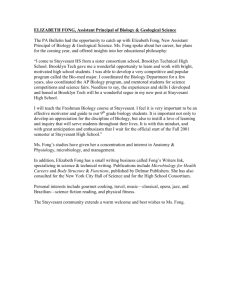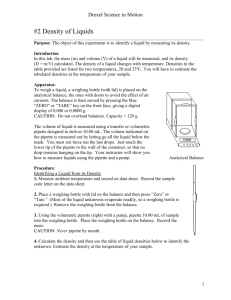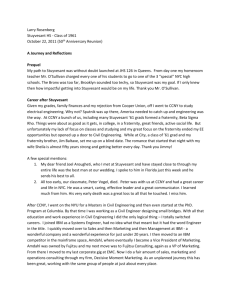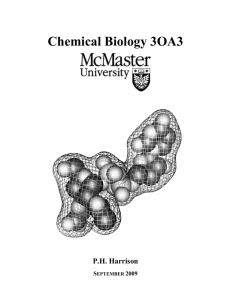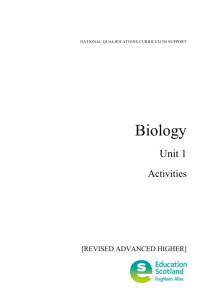Lab_1 Introduction to the Biology Laboratory Safety
advertisement
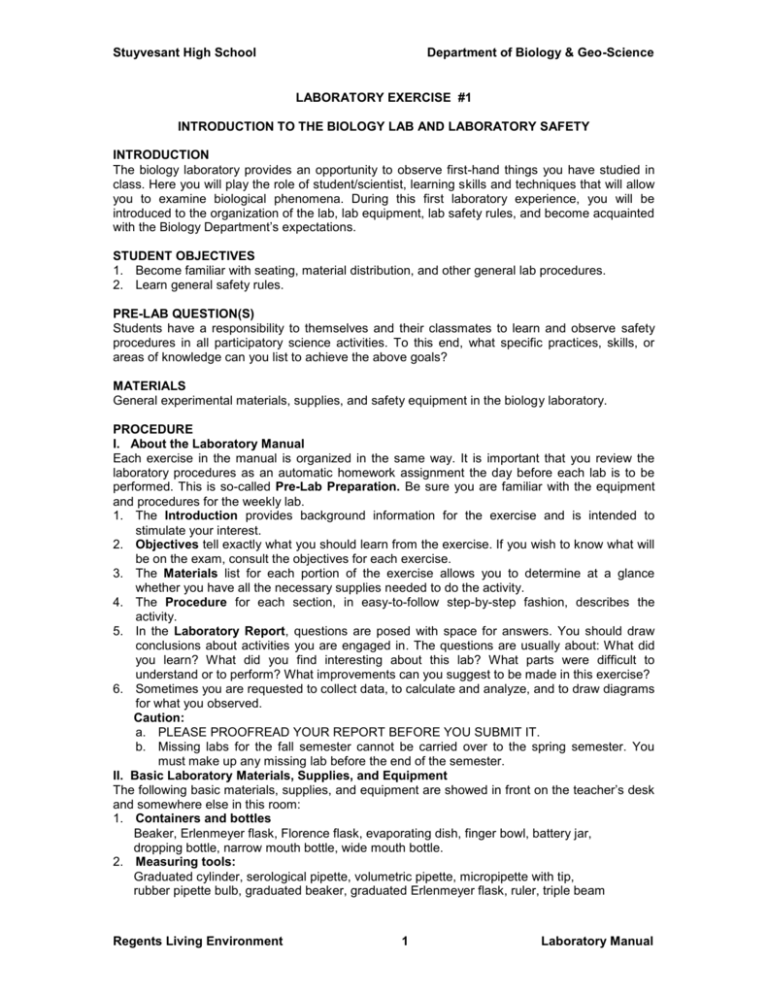
Stuyvesant High School Department of Biology & Geo-Science LABORATORY EXERCISE #1 INTRODUCTION TO THE BIOLOGY LAB AND LABORATORY SAFETY INTRODUCTION The biology laboratory provides an opportunity to observe first-hand things you have studied in class. Here you will play the role of student/scientist, learning skills and techniques that will allow you to examine biological phenomena. During this first laboratory experience, you will be introduced to the organization of the lab, lab equipment, lab safety rules, and become acquainted with the Biology Department’s expectations. STUDENT OBJECTIVES 1. Become familiar with seating, material distribution, and other general lab procedures. 2. Learn general safety rules. PRE-LAB QUESTION(S) Students have a responsibility to themselves and their classmates to learn and observe safety procedures in all participatory science activities. To this end, what specific practices, skills, or areas of knowledge can you list to achieve the above goals? MATERIALS General experimental materials, supplies, and safety equipment in the biology laboratory. PROCEDURE I. About the Laboratory Manual Each exercise in the manual is organized in the same way. It is important that you review the laboratory procedures as an automatic homework assignment the day before each lab is to be performed. This is so-called Pre-Lab Preparation. Be sure you are familiar with the equipment and procedures for the weekly lab. 1. The Introduction provides background information for the exercise and is intended to stimulate your interest. 2. Objectives tell exactly what you should learn from the exercise. If you wish to know what will be on the exam, consult the objectives for each exercise. 3. The Materials list for each portion of the exercise allows you to determine at a glance whether you have all the necessary supplies needed to do the activity. 4. The Procedure for each section, in easy-to-follow step-by-step fashion, describes the activity. 5. In the Laboratory Report, questions are posed with space for answers. You should draw conclusions about activities you are engaged in. The questions are usually about: What did you learn? What did you find interesting about this lab? What parts were difficult to understand or to perform? What improvements can you suggest to be made in this exercise? 6. Sometimes you are requested to collect data, to calculate and analyze, and to draw diagrams for what you observed. Caution: a. PLEASE PROOFREAD YOUR REPORT BEFORE YOU SUBMIT IT. b. Missing labs for the fall semester cannot be carried over to the spring semester. You must make up any missing lab before the end of the semester. II. Basic Laboratory Materials, Supplies, and Equipment The following basic materials, supplies, and equipment are showed in front on the teacher’s desk and somewhere else in this room: 1. Containers and bottles Beaker, Erlenmeyer flask, Florence flask, evaporating dish, finger bowl, battery jar, dropping bottle, narrow mouth bottle, wide mouth bottle. 2. Measuring tools: Graduated cylinder, serological pipette, volumetric pipette, micropipette with tip, rubber pipette bulb, graduated beaker, graduated Erlenmeyer flask, ruler, triple beam Regents Living Environment 1 Laboratory Manual Stuyvesant High School Department of Biology & Geo-Science balance. 3. Materials for supporting or holding Support stand, burette clamp, support ring, tripod, test-tube rack, test-tube holder, clamp holder, tong. 4. Materials for heating Bunsen burner, flint lighter, wing top, spot plate, alcohol lamp, wire gauze. 5. Dissection materials Dissecting pan, scissors, probe, scalpel, dissecting needles, forceps. 6. Micro-examination materials Compound microscope, stereoscope, slide, cover slip, hand lens, watch glass. 7. Materials for inoculating Inoculating loop, petri dish. 8. Other general materials Centigrade thermometer, funnel, pipette dropper, spot plate, centrifuge. 9. Safety equipment Eyewash bottle or eye bath, safety goggle, first-aid kit, fire extinguisher. III. General Safety Rules 1. Before you start a. Be familiar with the working equipment. Learn the location of the fire blankets, first aid kit, eye wash station (if available), safety shower, and fire extinguisher. b. Check what materials and equipment the teacher has offered and learn how to handle them. c. Be sure to tie back long hair and secure loose clothing so that they do not get caught in a Bunsen burner flame or chemicals. d. Understand that the laboratory is a dangerous place for fooling around or “Horse Play” of any kind. 2. While you are working a. Perform only laboratories assigned by your teacher. b. Pay close attention to any CAUTIONS described in the laboratory exercise. c. Use the safety equipment, such as safety goggles and laboratory aprons, provided for you. d. When heating substances in a test tube or other container, do not look directly into the container. e. Be sure that the opening of the test tube or other container being used is pointed way from you and other people. f. Use only the chemicals listed for each laboratory. g. To prevent contamination, never return unused chemicals to the original container. h. Properly mount the specimen on the dissecting tray before making an incision. i. Keep pathways clear by placing extra items such as coats, books, and purses in their designated areas. A clean work area is the first step in preventing accidents. j. Absolutely NO eating or drinking in the laboratory. k. You must not insert anything other than the appropriate electrical plug in any electrical outlet. This action will be followed by immediate Dean’s referral. 3. Having an emergency a. Report all accidents to your teacher immediately. b. If you spill acid, base, or other corrosive materials on yourself, immediately flush the with plenty of water. c. Place broken glass and other solid waste materials in containers designated for their disposal. 4. When you finish a. When you finish the laboratory, be sure to turn off the gas and water, disconnect electrical connections, place all materials and laboratory equipment to their proper places, clean and dry any laboratory glassware and articles, and clean your work area. b. No specimen or material is to be taken out of the laboratory. Regents Living Environment 2 Laboratory Manual Stuyvesant High School c. Department of Biology & Geo-Science Only liquids are to be emptied into the sinks in the laboratory. No other material is to be placed into the sinks. Regents Living Environment 3 Laboratory Manual





